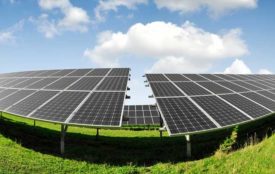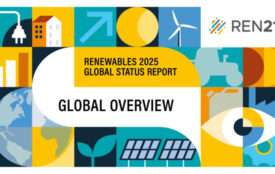Researchers Engineer AI Path To Prevent Power Outages
University of Texas at Dallas researchers have developed an artificial intelligence (AI) model that could help electrical grids prevent power outages by automatically rerouting electricity in milliseconds.
The UT Dallas researchers, who collaborated with engineers at the University at Buffalo in New York, demonstrated the automated system in a study published online June 4 in Nature Communications.
The approach is an early example of “self-healing grid” technology, which uses AI to detect and repair problems such as outages autonomously and without human intervention when issues occur, such as storm-damaged power lines.
“Our goal is to find the optimal path to send power to the majority of users as quickly as possible. But more research is needed before this system can be implemented.”
Dr. Jie Zhang, associate professor of mechanical engineering in the Erik Jonsson School of Engineering and Computer Science
The North American grid is an extensive, complex network of transmission and distribution lines, generation facilities and transformers that distributes electricity from power sources to consumers.
Using various scenarios in a test network, the researchers demonstrated that their solution can automatically identify alternative routes to transfer electricity to users before an outage occurs. AI has the advantage of speed: The system can automatically reroute electrical flow in milliseconds, while current human-controlled processes to determine alternate paths could take from minutes to hours.
“Our goal is to find the optimal path to send power to the majority of users as quickly as possible,” said Dr. Jie Zhang, associate professor of mechanical engineering in the Erik Jonsson School of Engineering and Computer Science. “But more research is needed before this system can be implemented.”
Zhang, who is co-corresponding author of the study, and his colleagues used technology that applies machine learning to graphs in order to map the complex relationships between entities that make up a power distribution network. Graph machine learning involves describing a network’s topology, the way the various components are arranged in relation to each other and how electricity moves through the system.
Network topology also may play a critical role in applying AI to solve problems in other complex systems, such as critical infrastructure and ecosystems, said study co-author Dr. Yulia Gel, professor of mathematical sciences in the School of Natural Sciences and Mathematics.
“In this interdisciplinary project, by leveraging our team expertise in power systems, mathematics and machine learning, we explored how we can systematically describe various interdependencies in the distribution systems using graph abstractions,” Gel said. “We then investigated how the underlying network topology, integrated into the reinforcement learning framework, can be used for more efficient outage management in the power distribution system.”
The researchers’ approach relies on reinforcement learning that makes the best decisions to achieve optimal results. Led by co-corresponding author Dr. Souma Chowdhury, associate professor of mechanical and aerospace engineering, University at Buffalo researchers focused on the reinforcement learning aspect of the project.
If electricity is blocked due to line faults, the system is able to reconfigure using switches and draw power from available sources in close proximity, such as from large-scale solar panels or batteries on a university campus or business, said Roshni Anna Jacob, a UTD electrical engineering doctoral student and the paper’s co-first author.
“You can leverage those power generators to supply electricity in a specific area,” Jacob said.
After focusing on preventing outages, the researchers will aim to develop similar technology to repair and restore the grid after a power disruption.
The work was supported by the U.S. Office of Naval Research and the National Science Foundation.








